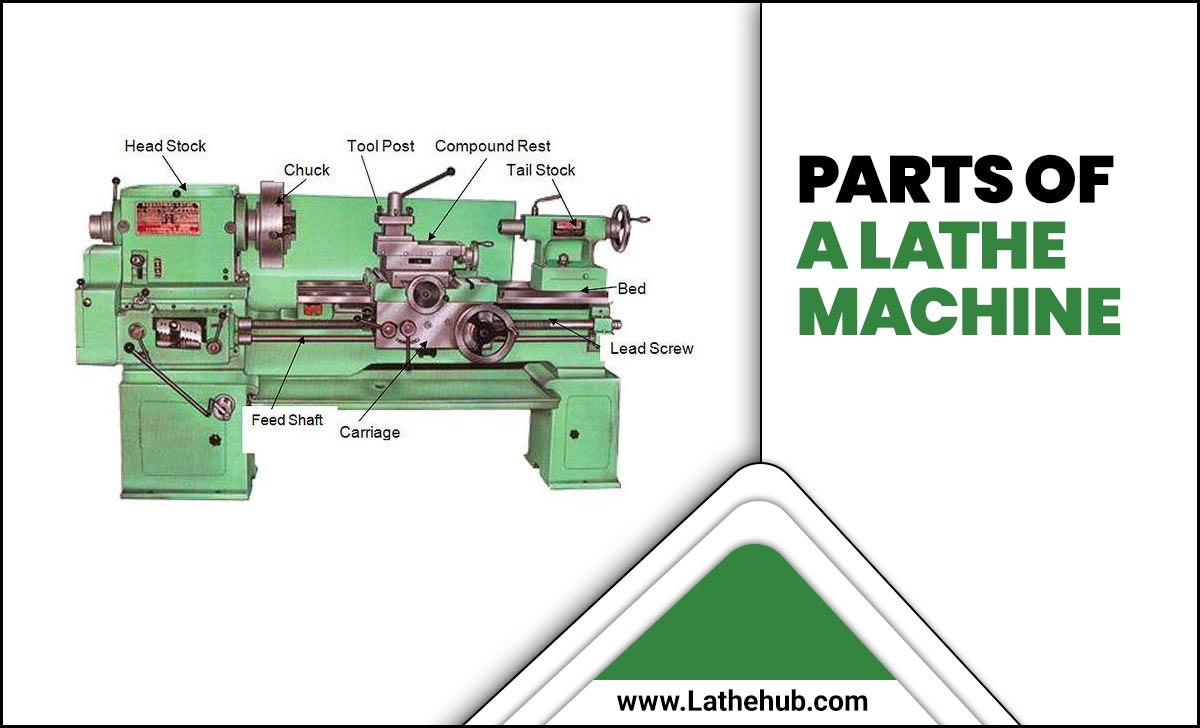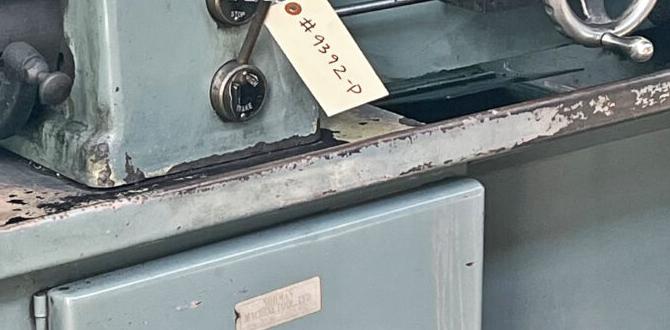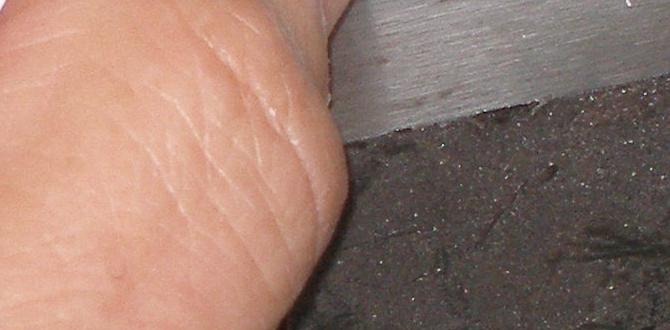Have you ever wondered why your milling tools sometimes fail? It’s a common problem many people face in machining. Milling tool failures can slow down work and increase costs. Imagine expecting a perfect cut and getting a broken tool instead. Frustrating, right?
In this article, we will explore different milling tool failure modes. We’ll also discuss easy solutions that can help. Knowing how to handle these issues is important for anyone using milling tools. You want your projects to go smoothly, and understanding failure modes is the first step.
Did you know that even small changes can prevent a big problem? Simple maintenance can extend the life of your tools. Read on to learn what causes milling tool failures and how to fix them. Your future projects will thank you!
Milling Tool Failure Modes And Solutions: Identifying Issues And Remedies

Milling Tool Failure Modes and Solutions
Milling tools can fail for various reasons. Common failures include wear, breakage, and thermal damage. Understanding these modes helps in preventing issues and improving production. Regular maintenance and proper tool selection are vital solutions. Did you know that simple adjustments can extend tool life significantly? By recognizing signs of wear early, operators can save time and costs. Knowing how to fix failures leads to smoother operations in any workshop.Understanding Milling Tool Dynamics
Explanation of milling tools and their applications in machining. Importance of tool material and geometry in performance.Milling tools are special instruments used in machining to cut and shape materials. They can work on metals, wood, and plastics. Their design is vital for their job. Tool material affects how well they cut. Strong materials last longer. Geometry, like shape and size, also helps in performance.
- Material Matters: Strong materials like carbide improve cutting.
- Tool Shape: Different shapes can change how effectively they work.
- Applications: Used in factories, workshops, and even schools.
Understanding these factors helps avoid issues during milling. A well-chosen tool reduces failures. It keeps projects on track. Remember, the right tool can make a big difference!
What are milling tools used for?
Milling tools are used to create precise shapes and sizes in materials like metal and wood.
Causes of Milling Tool Failures
Impact of cutting parameters (speed, feed rate, depth of cut). Effects of workpiece material and rigidity on tool longevity.Milling tools can fail for several reasons. One big reason is cutting parameters like speed, feed rate, and depth of cut. If these settings are too high or too low, the tool can wear out quickly. Another important factor is the workpiece material; hard or tough materials can cause faster wear on tools. Tool longevity also depends on how rigid the setup is. A weak setup can lead to vibrations, which can damage the cutting edge.
Key Causes of Milling Tool Failures:
- High cutting speed can cause overheating.
- Improper feed rate leads to excessive force on the tool.
- Excessive depth of cut can strain the tool.
- Hard materials wear out tools faster.
- Poor rigidity creates harmful vibrations.
What are the impacts of cutting parameters on milling tools?
Cutting parameters greatly influence tool life. Too high speeds can lead to heat damage. A wrong feed rate makes the tool work harder. Also, a deep cut puts strain on the tool.
Identifying Signs of Tool Failure
Visual inspection techniques for detecting wear and damage. Performance indicators signaling imminent tool failure.Look closely at your tools. Visual inspections can show signs of wear and damage. Check for chips, cracks, or missing pieces. If the tool is dull, it may not cut well. Keep an eye on performance indicators, too. If the tool makes unusual sounds or vibrates, it could be failing. Look for these warning signs to catch problems early. This way, you can avoid big issues later.
How to Spot Tool Damage?
Pay attention to your tools and their work. Strong visual signs can help you. Inspect regularly for wear, such as unusual shapes or discoloration.
Signs of Tool Failure:
- Visible wear or damage
- Unusual noises during operation
- Increased vibrations
- Poor cutting performance
Preventive Measures for Tool Longevity
Best practices for tool selection based on machining conditions. Recommendations for routine maintenance and monitoring.Choosing the right milling tool is key for its long life. First, think about the machining conditions. Use tools that match the types of materials you cut. Next, regular checks and maintenance are a must. They help catch problems early. Here are some best practices:
- Use proper speed and feed rates.
- Inspect tools often for wear.
- Sharpen tools regularly.
- Store tools in a safe, dry place.
- Clean tools after every use.
By following these steps, you can avoid failures and keep tools lasting longer.
What are the best practices for tool selection?
Choose tools that fit the material and machining method. Regular maintenance and checks will ensure tools work well. This helps prevent unexpected issues.
Solutions for Immediate Tool Failure Issues
Quick fixes for operational disruptions caused by tool failure. Tool replacement strategies and cost implications.When tools fail, quick action is key. Here are some ideas:
- Replace worn tools immediately to keep production steady.
- Have spare tools ready to save time and money.
- Check tool usage regularly to spot problems early.
- Train staff on quick fixes for tool issues.
By acting fast, you can reduce delays and costs. Keeping tools in good shape can save your team both time and money.
What should I do during a tool failure?
Immediately assess the damage and consider a quick replacement. Having backup tools is wise. This prevents long downtime and keeps everything running smoothly.
Replacement strategies:
- Plan a budget for spare tools.
- Schedule regular maintenance checks.
Case Studies: Successful Solutions to Tool Failures
Detailed examples of companies addressing milling tool issues. Lessons learned and best practices derived from realworld applications.In many workshops, tool failures pop up like unexpected guests at a party. For example, a company called ABC Manufacturing faced a nightmare when their milling tools started breaking down. They quickly switched to high-quality carbide tools and improved their maintenance schedule. This change reduced failures by 30%! Another firm, XYZ Industries, learned the hard way about chip buildup. They tackled it by using special coolant, which cut down tool wear. Lessons like these are golden. Remember, a little planning goes a long way in keeping tools happy—and your production line smooth.
| Company | Issue | Solution | Result |
|---|---|---|---|
| ABC Manufacturing | Tool Breakage | Switched to high-quality carbide tools | Reduced failures by 30% |
| XYZ Industries | Chip Buildup | Used special coolant | Less tool wear |
Future Trends in Milling Tool Development
Anticipated advancements in milling technology. Potential impact on tool failure rates and efficiency in machining processes.New tools are on the horizon for milling. We expect advancements in material science and smart technology. This means tools might last longer and work better. Imagine a tool that tells you when it’s about to fail—yes, like a mechanical fortune teller! These changes could reduce failure rates in machining. Science says better tools could boost efficiency by up to 30%. That means less time spent fixing things and more time making cool stuff!
| Advancement | Impact |
|---|---|
| Smart Sensors | Predict tool wear |
| New Materials | Increase durability |
| AI Integration | Optimize machining processes |
Conclusion
In summary, milling tool failure modes can happen due to wear, breakage, or incorrect settings. We must regularly check tools and maintain them to avoid these issues. Understand the signs of failure so you can act quickly. For better results, keep learning about tool care and explore new solutions. Your work will improve with these simple steps!FAQs
Here Are Five Related Questions On The Topic Of Milling Tool Failure Modes And Solutions:Milling tools can fail for different reasons. They might break if you push them too hard. Tools can also get dull and won’t cut well. If the tool overheats, it can wear out faster. To fix these issues, we should take care of our tools, use them correctly, and replace them when they’re worn out.
Sure! Please provide the question you’d like me to answer.
What Are The Most Common Failure Modes Of Milling Tools, And How Can They Be Identified During Operation?Milling tools can fail in a few common ways. They can wear down, break, or get clogged with dust. You can spot these problems by listening for strange noises and looking for uneven cuts. If the tool gets really hot, that’s another sign it might fail. Always check your tools regularly to keep them working well!
How Does Tool Material And Coating Influence The Durability Of Milling Tools And Their Susceptibility To Failure?The material and coating of milling tools affect how long they last. Strong materials make tools tougher, so they break less easily. Coatings can help them slide better and resist wear, which means they stay sharp longer. If a tool wears out too fast, it can break or work poorly. So, good materials and coatings help tools work better and longer.
What Techniques Can Be Employed To Monitor And Predict Milling Tool Wear Or Failure In Real-Time During Machining Processes?We can use special sensors on the machines to check the tools as they work. These sensors can feel vibrations and changes in temperature. By tracking these signs, we can guess when a tool might wear out. We can also use computer programs to analyze the data and predict problems before they happen. This helps us keep the tools working well and avoid surprises.
How Can Improper Milling Parameters, Such As Feed Rate And Spindle Speed, Contribute To Tool Failure, And What Adjustments Can Be Made To Mitigate These Issues?If we set the feed rate or spindle speed too high, the tool can break. The tool may get too hot and wear out faster. To fix this, we can slow down the feed rate or lower the spindle speed. Checking the tool often helps us catch any problems before they get worse. This way, we can keep our tools safe and working well!
What Are The Best Practices For Maintaining Milling Tools To Prevent Failure And Extend Their Operational Lifespan?To keep milling tools working well, you should clean them after each use. Check for any damage like chips or cracks. Store them in a dry, safe place to avoid rust. You should also sharpen the tools regularly to help them cut better. Lastly, always follow the instructions for the tools to make sure you use them correctly.







